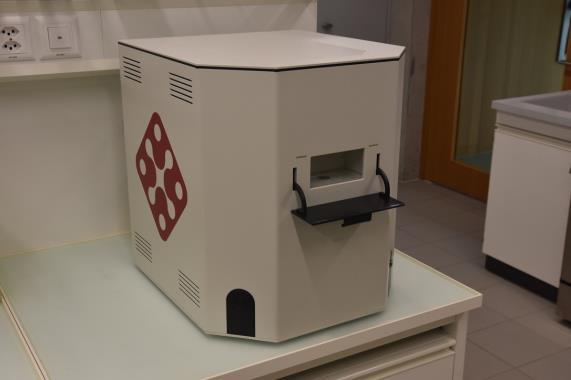
2 minute read
Hardware-Software Integration and Validation of a Compact THz System
At ICP we are developing a new compact instrument for terahertz (THz) non-destructive material testing and characterization. The new system is used for THz spectroscopic measurements, THz imaging and THz thickness measurements with an ultra-broadband spectral range beyond 15 THz.
Contributors: U. Puc, V. Michel, M. Jazbinsek Partner(s): Rainbow Photonics AG Funding: Innosuisse, Master’s Thesis Duration: 2019–2021
Advertisement
Terahertz (THz) photonics is a fast-growing field with very promising applications in non-destructive material testing, imaging and material identification/spectroscopy. During the last two decades, many different approaches to generate THz waves for both research and industrial applications have been suggested. Presently, most commercial and laboratory THz timedomain spectroscopy systems record spectra up to few THz only. The experimental system developed at ICP in collaboration with the company Rainbow Photonics AG, however, can measure frequencies up to 20 THz, as it benefits of the combination of organic crystals (DSTMS) and a compact telecom femtosecond laser used for generation and detection. Moreover, the system is designed to facilitate the implementation of an optical-pump THz-probe option without losing any functionalities of the basic time-domain spectrometer. The developed ultra-broadband THz time-domain spectrometer shows an excellent linearity of both generation and detection of the THz time-domain spectrometer, which is a prerequisite for a reliable sample parameter extraction, including the thickness and the complex refractive index. The measured frequencies of narrow water absorption lines are in excellent agreement with absorption spectrum according to literature, thus successfully validating the DSTMS-based spectrometer over the full 20 THz bandwidth with an accuracy of 2.7 GHz. [1] Thickness measurements of samples in reflection geometry have shown a remarkable accuracy, enabling the measurement of samples thinner than 50 µm with a relative error of 1 %, therefore opening new possibilities for the presented methods. Simultaneous refractive index and thickness measurement of about 0.5 mm thick germanium wafers with an accuracy of 0.1 % have been demonstrated in transmission geometry. The conductivity changes of a germanium sample when optically excited in the newly developed optical-pump THz-probe system are clearly observed as the THz transmission changes by more than 50 % in the low THz frequency range. The performed work demonstrates advanced capabilities of the compact THz time-domain spectroscopy system implemented as a bench setup at the ZHAW with potential further improvements in detection electronics optimisation in order to minimise the laser noise influences and considerably improve the systems signal-to-noise ratio. In addition, further development of data extraction algorithms will allow for better accuracy in thickness and material parameter extraction, which is interesting for various research and industrial applications.
Fig 1: The developed time-domain THz spectroscopy system is based on measuring the electric field with a sub-picosecond resolution. THz electric fields with frequency components up to 20 THz have been generated and detected. This is possible due to integration and optimization of photonics and electronics components and data acquisition software.
Literature:
[1] Puc, U.; Bach, T.; Günter, P.; Zgonik, M.; Jazbinsek, M., 2021. Ultra-Broadband and High-Dynamic-Range THz Time- Domain Spectroscopy System Based on Organic Crystal Emitter and Detector in Transmission and Reflection Geometry. Advanced Photonics Research 2, 2000098, DOI: 10.1002/adpr.202000098.








